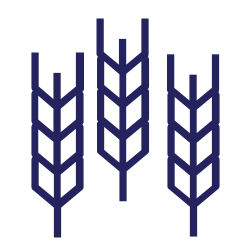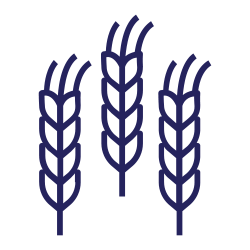CTAG2 – Canadian triticum advancement through genomics
Crop Types
- Wheat
Collaborating Locations
University of SaskatchewanBackground
The CTAG2 project was designed to develop novel genomic tools to advance wheat biology and
breeding in the next 10 to 15 years. Specifically, the genomic resources developed were aimed at improving
selection efficiency and to access untapped genetic variation from related species. CTAG2’ s outputs will
benefit Canadians by providing breeders with comprehensive foundational resources to maximize genetic
gains, thereby improving the rate of genetic gain through the release of new, higher yielding sustainable
cultivars.
CTAG2 focused on five research themes.
- Genome Sequencing: CTAG2 will develop an enhanced chromosome-based genome sequence of Chinese Spring Wheat with the ultimate goal to support development of a “ pan-genome of wheat” . The pan genome will focus on capturing and characterizing the world-wide genetic diversity within the wheat crop, which is needed to determine the precise location of genes controlling important traits such as yield and disease resistance.
- Epigenetics/Gene Regulation in Wheat: CTAG2 will carefully select germplasm to characterize epigenetic variation in wheat and examine how this variation impacts agronomic traits in wheat.
- Modulating Genetic Recombination: CTAG2 will characterize the recombination processes in wheat and investigate molecular genetic approaches with the ultimate aim to apply this knowledge to modulate meiotic recombination frequency.
- Genomic Associations: CTAG2 will genotype well-characterized mapping and association panels of available germplasm using high-density SNP arrays, perform transcriptome association analyses of populations segregating for Fusarium head blight (FHB) resistance, and clone genes for resistance to disease (leaf and stem rust) and insect’ s (orange wheat blossom midge and wheat stem sawfly).
- Ethical, environmental, economic, legal, and social implications: CTAG2 will focus on understanding key factors that will shape future wheat breeding including regulation of new breeding techniques, new Plant Breeders Rights legislation, and potential for new research partnerships.
Objectives
- Implement new developments in sequencing technology and novel selection strategies for wheat improvement.
Key Outcomes:
The reference sequence for Chinese Spring was completed along with cataloguing the pan-genome of wheat through the work of the 10+ Wheat Genome Project. Comparative analysis and completion of reference quality sequences of 10 wheat varieties, as well as scaffolded assemblies for five additional cultivars are now available to the public. Published work in wheat epigenetics, modulating genetic recombination in wheat, identifying important genetic associations for genes critical to wheat production in the stressful western Canadian environments, and a range of recommendations for the regulation of new breeding technologies in wheat.
Key Takeaways
The reference sequence for Chinese Spring was completed along with cataloguing the pan-genome of wheat through the work of the 10+ Wheat Genome Project. Comparative analysis and completion of reference quality sequences of 10 wheat varieties, as well as scaffolded assemblies for five additional cultivars are now available to the public. Published work in wheat epigenetics, modulating genetic recombination in wheat, identifying important genetic associations for genes critical to wheat production in the stressful western Canadian environments, and a range of recommendations for the regulation of new breeding technologies in wheat.

















